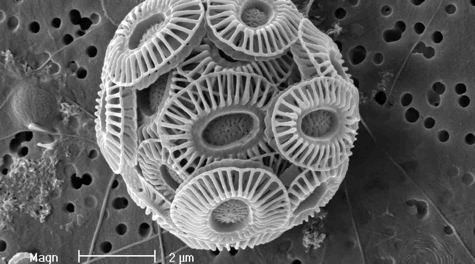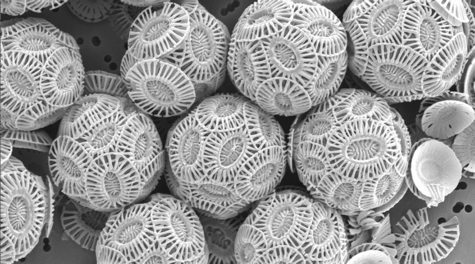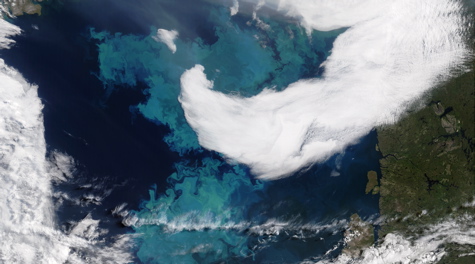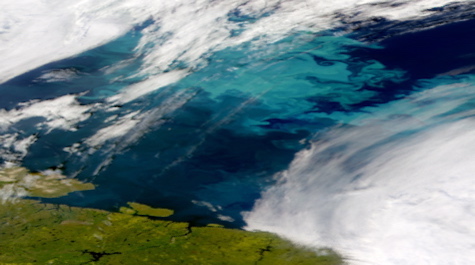FAQ: Ocean Acidification
I've read that the ocean is becoming more acidic due to the release of carbon dioxide to the atmosphere. How might this affect marine food webs?
Background
The acidity of the world’s oceans is increasing due to the release of carbon dioxide (CO2) through the burning of fossil fuels and other human activities. Only about half of all human-produced CO2 remains in the atmosphere, the other half is taken up by the oceans (~30%) and by plants and animals on land (~ 20%).
The increase in atmospheric CO2 from a pre-industrial level of 275 parts per million (ppm) to today’s value of 383 ppm has led to a decrease in seawater pH of 0.1 pH units. The pH of surface oceans is projected to drop another 0.3-0.4 pH units by the end of this century, a rate of change that is approximately 100-times faster than has occurred in the past 650,000 years.
The ocean’s increasing acidity has important consequences for the many marine plants and animals that use carbonate minerals (e.g., CaCO3) to form their shells and skeletons, as these minerals begin to dissolve at pH levels only slightly lower than currently found in surface seawater. Calcifying organisms include corals, mollusks, and phytoplankton such as coccolithophores and foraminifera.
Although public attention to this issue has focused largely on coral reefs, many marine scientists are even more concerned about potential effects of acidification on the tiny floating phytoplankton that sustain the ocean food web.
Phytoplankton and Decreasing Ocean pH
Increasing ocean acidity is likely to change the types of phytoplankton that can live in different parts of the ocean. For example, coccolithophores can only produce their calcareous plates under more basic pH levels. If the pH falls too low, other phytoplankton will take over where coccolithophores once dominated. Changes in the composition of the phytoplankton community could ripple up the food chain, so impacts on fisheries are a concern.
An equally pressing concern is that changes in community composition could decrease the ocean's ability to remove CO2 from the atmosphere. For example, coccolithophores are heavy and carbon-rich. When they die, or are eaten and packaged into fecal pellets (e.g., krill poop), their carbon sinks relatively quickly into the deep ocean, where it can remain for thousands of years, contributing nothing to global warming. The operation of this “biological pump” allows the ocean surface to absorb more from the air. If the community shifts from heavy, carbon-rich coccolithophores to other cells that are lighter and relatively carbon-poor, the ocean will be able to absorb less of the atmosphere’s excess of human-produced CO2.
—some of this material is adapted from J. Guinotte and V.J. Fabry, 2009. The Threat of Acidification to Ocean Ecosystems. Current - The Journal of Marine Education 25(1): 2-6.




